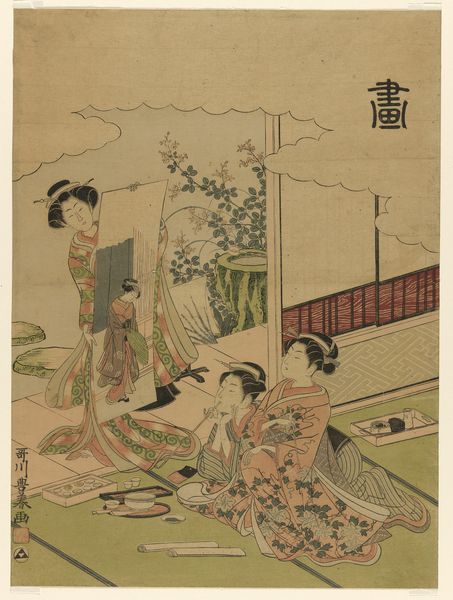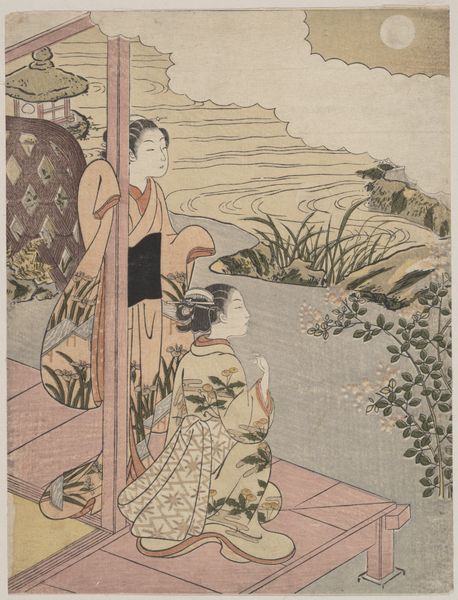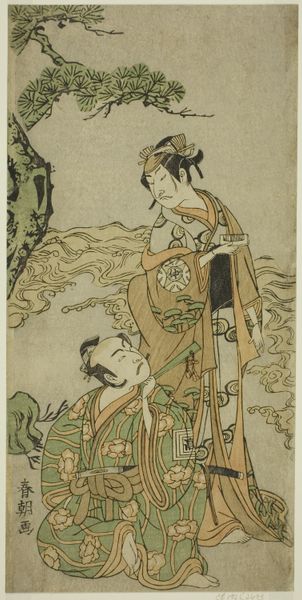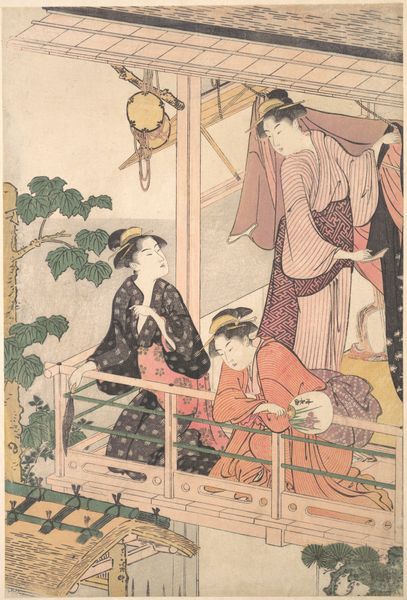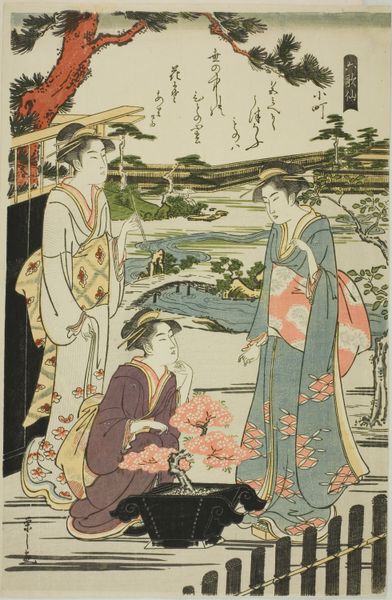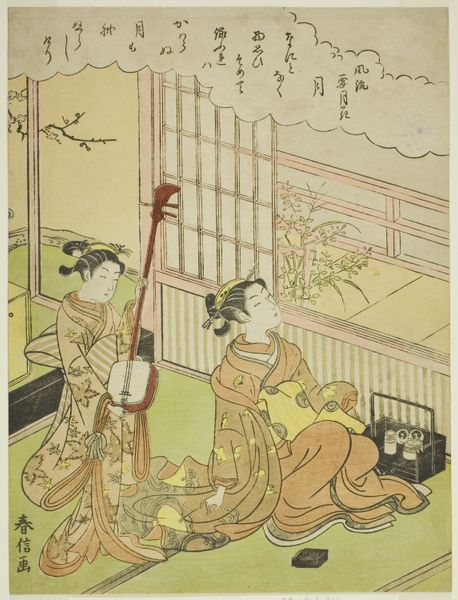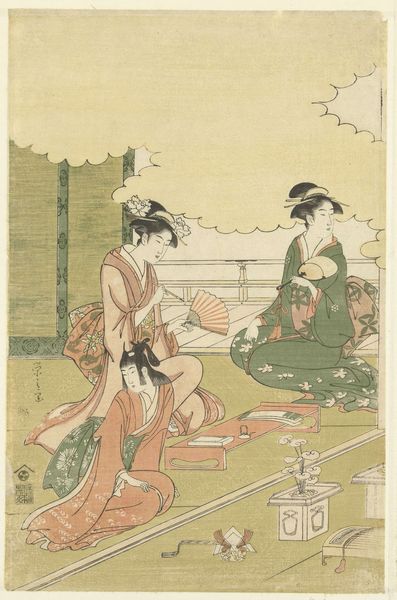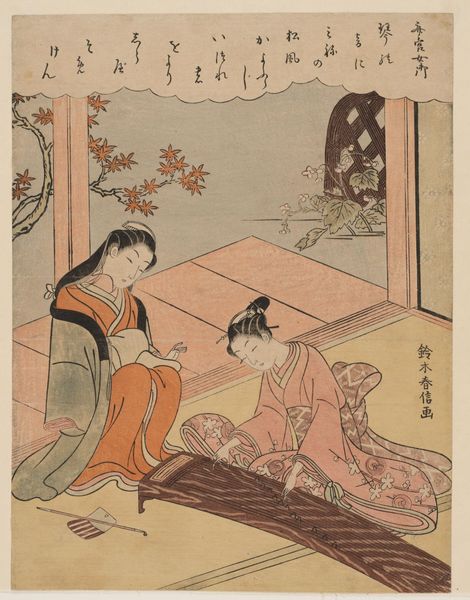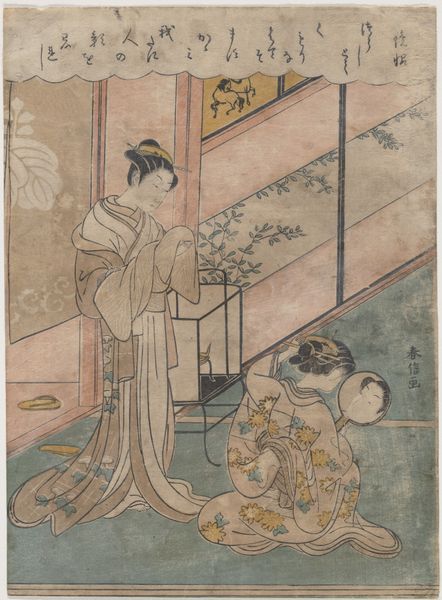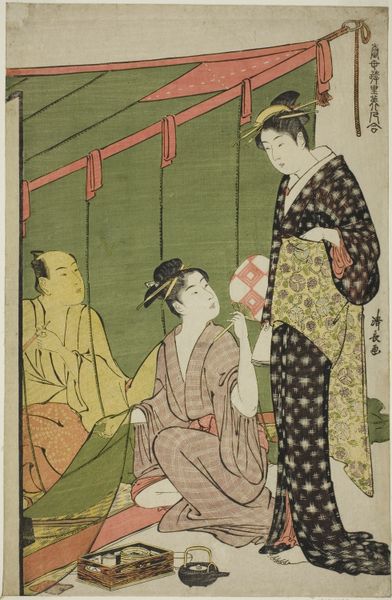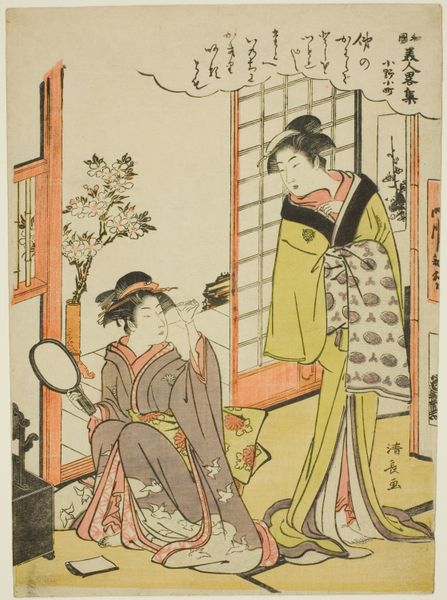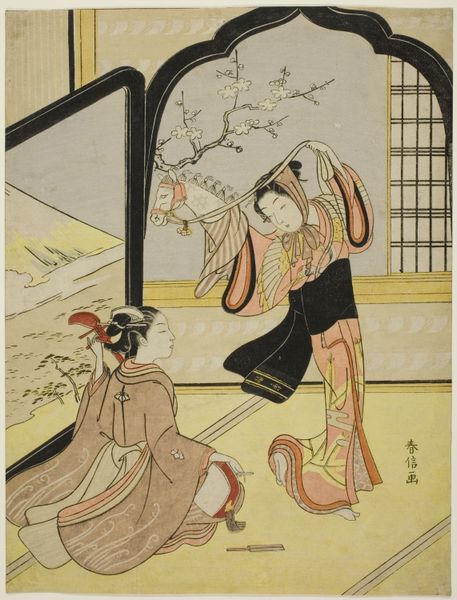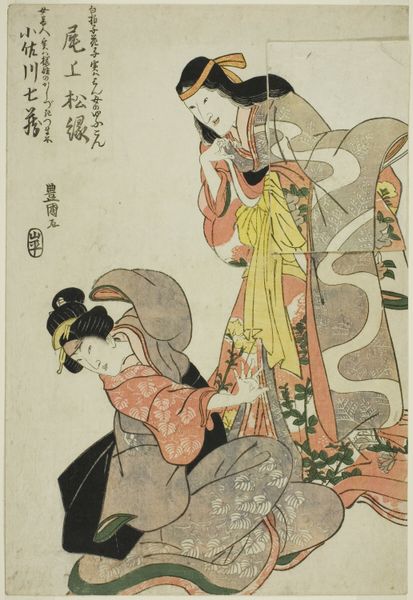
Watching a Cockfight at the Edge of the Veranda c. 1767 - 1768
0:00
0:00
print, woodblock-print
# print
#
asian-art
#
ukiyo-e
#
figuration
#
woodblock-print
#
genre-painting
Dimensions: 27.3 × 20.3 cm (10 3/4 × 8 in.)
Copyright: Public Domain
Editor: We're looking at "Watching a Cockfight at the Edge of the Veranda," a woodblock print by Suzuki Harunobu, from around 1767. It's striking how calm the scene feels, despite the implied cockfight. What's your interpretation of the piece? Curator: It's important to remember that ukiyo-e prints weren’t just art, they were also a form of popular culture, distributed widely among a growing urban population. This print offers a window into Edo period society. The composition places us outside the immediate spectacle of the cockfight, distancing us, literally, behind the ladies who are also viewers of the scene. Where are they placed socially, do you think? Editor: I guess they're more privileged than the boy handling one of the birds... they are not directly involved in the activity, just watching. Does that suggest something about the politics of viewing and enjoying such a spectacle? Curator: Exactly. The print aestheticizes a common entertainment, arguably sanitizing the violence for a genteel audience. It's a commercially viable genre scene, crafted for a particular social stratum in Edo society. It speaks to the burgeoning market for depictions of everyday life but filtered through the lens of idealized beauty and leisure. Note that they have fan for cooling! Editor: So it's about seeing entertainment commodified and consumed by a specific social class, and their distance from more active forms of labour. What’s your view on how the medium itself contributes to that sanitized perspective? Curator: Woodblock printing allowed for mass production, democratizing art, but also shaping its content to appeal to the widest possible audience within that social strata. This blend of commerce and artistry gives Ukiyo-e prints their fascinating complexity. I find that truly fascinating. Editor: This really shifted my thinking about how we should consider the function of genre scenes in Japanese art history. Curator: Indeed. It's about the consumption of imagery and how social dynamics shaped artistic creation and distribution, even in 18th century Edo.
Comments
No comments
Be the first to comment and join the conversation on the ultimate creative platform.
